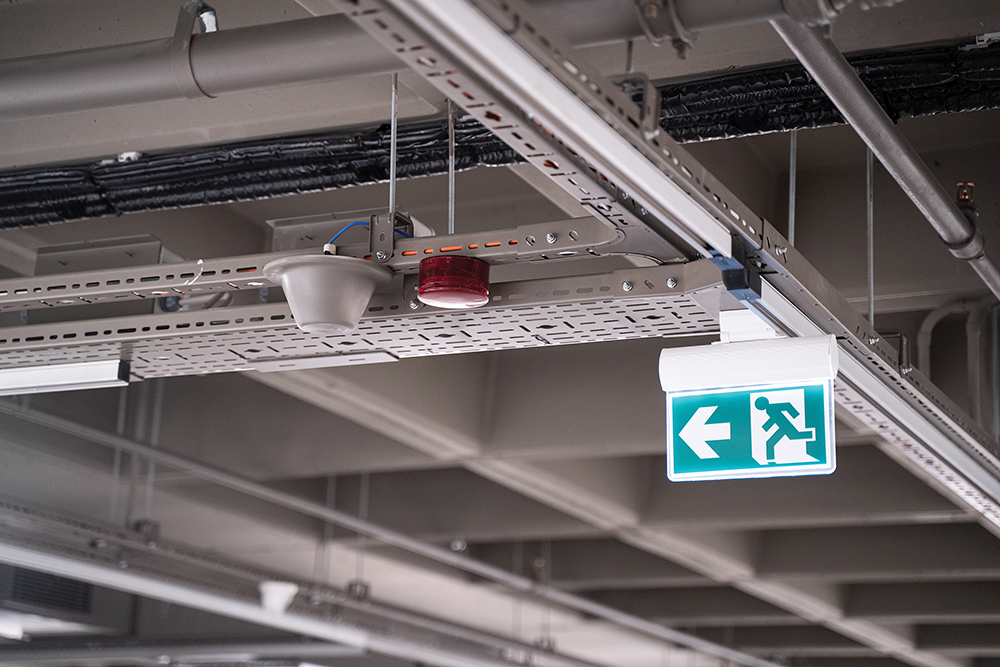Motor wiring methods are covered in Rules 28-100 to 28-112 of the Canadian Electrical Code. Wiring up a motor may seem like a pretty simple job, but we still need to consider a surprising number of details for good compliance with the code. This article will review some of the more important CEC rules for conductor ampacities as applicable to motor type, insulation class and duty service.
Rule 28-104 refers to Table 37, which divides motor enclosures into two categories:
- all motors except totally enclosed non-ventilated; and
- totally enclosed non-ventilated motors.
For each motor enclosure type, Table 37 specifies the minimum wiring insulation temperature ratings applicable to motor insulation classes A, B, F and H. These letters identify motor insulation temperature ratings based on a 20,000-hour temperature test for each insulation class. The numbers under each motor insulation class identify the minimum conductor insulation ratings required for connection directly into a motor terminal box.
For example, a totally enclosed, fan-cooled Class B insulated motor requires a minimum 75ºC conductor temperature, while a totally enclosed, non-ventilated Class B insulated motor requires minimum 90ºC.
A note of caution—the wiring insulation data provided in Table 37 applies only for motors operating in an ambient temperature of up to 30ºC. If the ambient temperature exceeds 30ºC, the difference between 30ºC and the maximum air temperature must be added to the conductor insulation ratings given in Table 37. For example, a totally enclosed fan-cooled (TEFC) Class B motor operating in an ambient temperature of 40ºC must have a minimum conductor insulation of 85ºC.
The code also recognizes two separate duty service categories for motors. Each requires a somewhat different formula for selecting the motor wiring sizes. The categories are:
- Continuous duty service—motors that are required to run continuously.
- Non-continuous duty service—motors that may run for shorter periods of time and which are listed in Table 27 as to classification of service and running times.
Continuous Duty Service
Once the conductor temperature ratings have been determined, minimum wire sizes are selected from Tables 1 to 4. Rule 28-106 requires that motor conductors for continuous duty service motors be sized to at least 125% of motor full-load current. Reference to Table D16 helps to avoid all of that complicated math.
But another note of caution—motor conductor ampacities are not, as in the usual case, based on the allowable ampacities given in Tables 1 to 4, but rather on their 75ºC ampacities. It is important to note that in addition to the wiring insulation temperatures specified in Table 37, motor conductor sizes must be selected from the 75ºC column of Tables 1 to 4, which often results in larger wire sizes. Rule 28-104(1) provides an exception for Class A motors, to permit the 90ºC conductor ampacity.
Non-Continuous Duty Service
For non-continuous duty service motors, minimum conductor ampacities are specified in Rule 28-106 and Table 27 for the following duty service classifications:
- Short time duty
- Intermittent duty
- Periodic duty
- Varying duty
Table 27 specifies the minimum motor conductor ampacities as a percentage of full-load currents. As shown in Table 27, the minimum conductor ampacities are also based on the length of time during which the motors are expected to operate.
For example, the minimum conductor ampacity for an intermittent duty passenger elevator which may run for up to 15 minutes is 85% of the motor full load amperes. If on occasion that elevator motor must run for longer periods, the minimum conductor ampacity is increased to 140%.
Otherwise, the same conditions as for continuous service duty motors apply. After selection from Table 27, the minimum conductor temperature ratings must still be selected from Table 37 and their ampacities determined on the basis of their 75ºC insulation ratings. There may also be other reasons to increase wire sizes such as voltage drop.
As with previous articles, you should always check with your local electrical inspection authority for a more precise interpretation of any of the above, in each province or territory as applicable.










Find Us on Socials